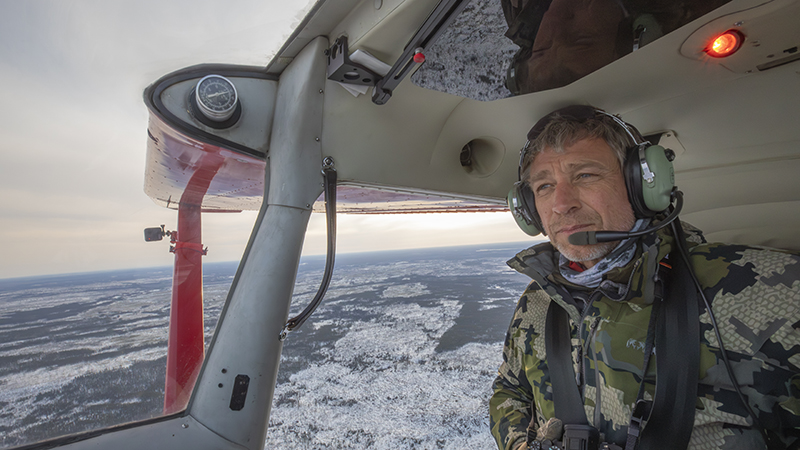
By Kim Hachiya
Images by conservation photographer Michael Forsberg illustrate a story about whooping cranes in the April 2024 edition of National Geographic magazine. About two dozen photos depict the cranes’ 2,500-mile annual migration from northern Canada to the Gulf of Mexico. The migration route crosses Nebraska, but images were taken all along the migration route.
Forsberg is a nationally known photographer who first established his reputation in Nebraska photographing sandhill cranes and other Great Plains wildlife. Now he’s a research assistant professor and conservation photographer-in-residence in the School of Natural Resources at the University of Nebraska-Lincoln. He’s also co-founder of the Platte Basin Timelapse, a project housed in the school aimed at documenting the Platte River and its associated environs in Nebraska, Colorado, and Wyoming.
The story in the April 2024 edition of National Geographic magazine, titled "Going the Distance: The Perilous and Inspiring Journey of Whooping Cranes" by Rene Ebersole, documents whooping crane migration and life.
In the late 1940s, there were just 16 whooping cranes left in the world. Intensive conservation work has brought the species (Grus americana) to a population of about 850.
The National Geographic photos are a mere slice of a project he’s been working on since 2019 when he embarked on a plan to document whooping cranes for a book. In addition to securing permits from multiple agencies in the United States and Canada, Forsberg’s logistics of securing funding, booking airplanes, finding places to stay, and other details were slowed by the Covid-19 pandemic.
Forsberg’s first goal was to follow the cranes’ migratory flyway through the heart of the Great Plains – starting at the Texas gulf coast where they winter and flying by small plane north to Wood Buffalo National Park in Canada.
"Typically, stories on cranes focus on either Texas or Wood Buffalo," he said. "I wanted to connect the dots of the migration up the middle and emulate their journeys."
Whooping cranes breed in Canada’s Wood Buffalo National Park and nearby locations. It is Canada’s largest national park, straddling the provincial borders between Alberta and Northwest Territories. It’s a 34-hour drive to Wood Buffalo, some 2,154 miles from Forsberg’s home base in Lincoln.
Read the rest of the article and see more images at https://snr.unl.edu/aboutus/what/newstory.aspx?fid=1138